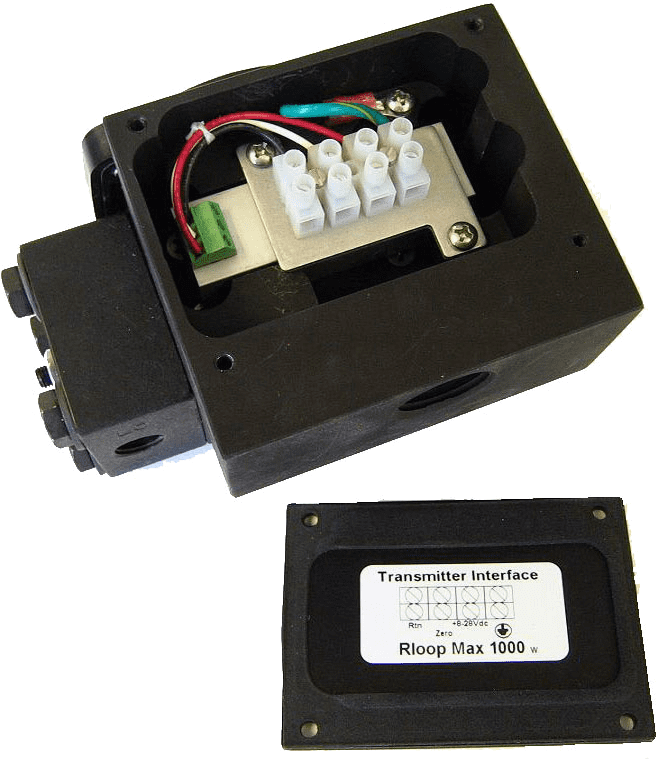
Differential pressure level transmitters are sophisticated devices that measure the level of a liquid in a vessel by converting the pressure exerted by the liquid column into an electrical signal. This conversion involves several stages, from initial pressure sensing to the final electrical output. You can read more about the level transmitter itself on our Differential Pressure Transmitters page, but in this article we will be discussing specifically how it is capable of turning pressure readings into electrical signals.
Principles of Differential Pressure Measurement
Hydrostatic Pressure: The core principle behind differential pressure level transmitters is hydrostatic pressure – the pressure exerted by a fluid at equilibrium due to the force of gravity. The pressure at a certain depth in a liquid is directly proportional to the height of the liquid column above that point.
Differential Pressure Measurement: Differential pressure level transmitters measure the difference in pressure between two points in a system. Typically, one point is at the bottom of the tank (high pressure) and the other is at the top or at a reference pressure point (low pressure). The pressure difference is directly related to the fluid level in the tank.
Key Components and Their Functions
Pressure Sensing Element (Diaphragm): The primary component is the pressure sensing element, usually a diaphragm, that responds to pressure changes. When pressure is applied, the diaphragm flexes or deflects.
Transducer Mechanism: Attached to the diaphragm is a transducer that converts the mechanical movement (diaphragm deflection) into an electrical signal. This transducer could be a strain gauge, a capacitive sensor, or a piezoelectric sensor, each using different methods to convert mechanical movement into an electrical response.
Electronic Circuitry: These transmitters are equipped with electronic circuitry that processes the raw electrical signal from the transducer. This circuitry amplifies, filters, and sometimes linearizes the signal to ensure accurate representation of the pressure.
Conversion of Pressure to Electrical Signal
Mechanical to Electrical Conversion: When the diaphragm deflects under pressure, the transducer attached to it converts this mechanical action into an electrical signal. For instance, in a strain gauge transducer, the deformation of the diaphragm changes the resistance of the gauge, which in turn changes the electrical signal.
Signal Conditioning: The raw signal from the transducer is usually weak and may contain noise. Electronic circuitry within the transmitter amplifies this signal, filters out noise, and converts it into a standardized format, typically a current (4-20 mA) or voltage signal.
Calibration and Configuration for Accuracy
Importance of Calibration: Calibration is essential to ensure the accuracy of the transmitter. It involves adjusting the transmitter to produce correct signals for known pressure values. This process typically includes setting the zero point (zero level in the tank) and span (the range of level measurement).
Configuration for Specific Applications: Transmitters are often configured for specific applications, taking into account factors like the density of the fluid being measured and the specific characteristics of the tank or vessel. This ensures that the transmitter provides accurate level measurements regardless of varying conditions.
Integration and Output
Standardized Output Signals: The processed signal, now in a standardized format, is transmitted to control systems. A 4-20 mA current signal is widely used because it is less susceptible to noise and can be easily integrated into various industrial control systems.
Use in Process Control: In industrial applications, these electrical signals are crucial for process monitoring and control. They can be used to display fluid levels, control valves, start or stop pumps, and trigger alarms for high or low levels.
Advancements in Technology: Modern differential pressure level transmitters incorporate advanced features such as digital communication protocols, onboard diagnostics, and remote configuration capabilities. These enhancements improve the reliability, ease of use, and integration of the transmitters into complex industrial systems.
Mid-West Instrument
In summary, the differential pressure level transmitter is an essential tool in process industries, reliably converting pressure readings into electrical signals for accurate fluid level measurement and control. Their effectiveness lies in precise mechanical design, sophisticated signal processing, and the ability to be calibrated and configured for specific applications and environments.
For over 60 years, Mid-West Instrument has been a leading provider of premium differential pressure gauges. Need help finding the right pressure gauge and equipment for your business? Reach out to us today to speak with one of our experienced professionals.

